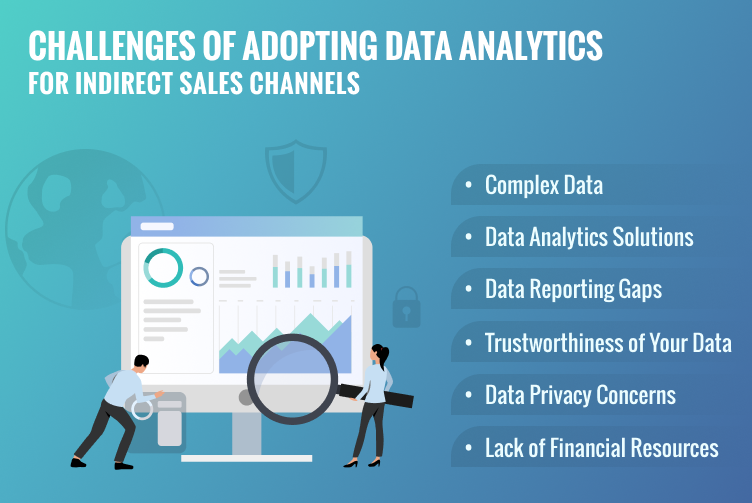It’s important to design a robust sales channel for a brand to stand out amid the competition. Today, customers take different routes to reach the point of purchase. However, businesses often miss out on leveraging all these channels by investing and measuring the channels with just the immediate conversions in mind. The result? The focus remains more on short-term goals, and success is dependent on the market to generate demand.
This is where the vitality of indirect sales channel comes to the fore. It nurtures an ideal scenario for companies to adapt to market shifts and catch up to the competitors.
Indirect Sales Channels – How To Design the Optimal Indirect Sales Channel?
Indirect sales refer to the selling of a brand’s products through third parties like resellers, agents, affiliates, etc. This accrues various advantages – for example, it helps brands leverage the existing third-party network, increase time-to-market especially in new geographies and markets, and utilise the third party’s logistical infrastructure.
Third parties are better equipped to understand the product and redirect the same to the potential customer. Giving partners access to relevant information and creating collaborative marketing campaigns with incentive programs can prove to be highly motivating to make them want to sell more.
What Is the Role of the Product When Thinking About the Indirect Sales Channels?
The product must be able to communicate the brand story and value proposition. The nature of the product itself decides its suitability to be sold through third parties. To that end, it’s important to understand the importance of the product being “market-fit.” Only when the product is aligned with the target audience’s needs and aspirations, can it lead to a sustainable business. And it’s important to narrate this value proposition to the potential partners through a strong brand vision.
Of course, the top management’s support is crucial to motivating and incentivising the indirect sales channels. They must realise that by deserving a stake in the growing revenue stream, the third party will be able to achieve their vested interests. And that brings us to the most important question – how do you design the optimal indirect sales channel? Let’s discuss.
Engaging with the Right Partners
The first step is to engage with the right partners. Businesses need to develop a good understanding of the partners, their strengths and weaknesses, and the kind of products to be distributed among them. Follow this checklist to identify the right partners:
- Meets the needs of your target market/audience: Check whether the partner company fits your localisation goals, market domain, use case, and bandwidth.
- Appropriate technical knowledge: Check whether the vendor/partner has knowledge or access to the financial, technical, market trends, etc., to take your product ahead to generate revenue.
- Compliments your product very well: Check whether the partner can complement your product delivery in a way that helps you reach out to new markets and increase brand recognition.
Once this assessment is done, businesses need to pitch the idea of a partnership, explain the revenue-sharing model, and seek joint decision-making.
Establishing a Partnership
If the partner is interested, the next step is to establish a win-win partnership. The top management needs to outline the roles and responsibilities of the partners as well as the tools that can be leveraged throughout this journey.
Pro tip: If you’re investing resources into partners’ training, availability, and skills, but the revenue the partner is bringing is not commensurate to the investment you made, it’s time to review and restructure the partnership.
Defining the Strategy
Once the groundwork is in place, it’s time to establish a go-to-market strategy that includes the channel blueprint, sales funnel, and metrics to track. It’s here that the collaborative nature of indirect sales can be made coherent with periodic touch-base meetings.
How Can Technology Play a Role?
It’s true that technology can’t be force-fitted into a complex operational web of indirect sales, especially when the control over the channel is distributed. However, technology can come as a great assistance to support the overall channel design by collating disparate data across various channels and using it to make informed business decisions.
Important Considerations to Ensure the Development of an Effective Indirect Sales Channel Network
1. Design a Two-Way Deal
Once you have a potential partner, keep their needs in mind as well. Make sure they also benefit from the partnership by enabling a fair deal with incentives and training.
2. Attract Targeted Partners
If your company has a good reputation, chances are high that potential partner would reach out to collaborate. Otherwise, it’s essential to pitch the product-market fit (as discussed above) in the most appealing way.
3. Retain and Strengthen Partner Relationship
After entering into a partnership, it’s important to keep evaluating the success of the campaign and, if required, reach out to the partner for feedback. As the business scales up, this process needs to be formalised and documented as part of a partner lifecycle.
The Bottom Line: Use Sales Partnership Platform
Scaling your business, looking out for different partners, managing all the data, sales, and operations, and paving the way for innovation and ideas can become challenging. Favourably, a platform like Sales Channel 360 can keep the sales goals aligned while the business focuses on a market-fit product.
Sales Channel 360 helps build indirect sales channel excellence, administer back-office sales support activity, drive incentive and additional support, streamline marketing activities, carry out distribution management, etc. Contact us to learn more.




